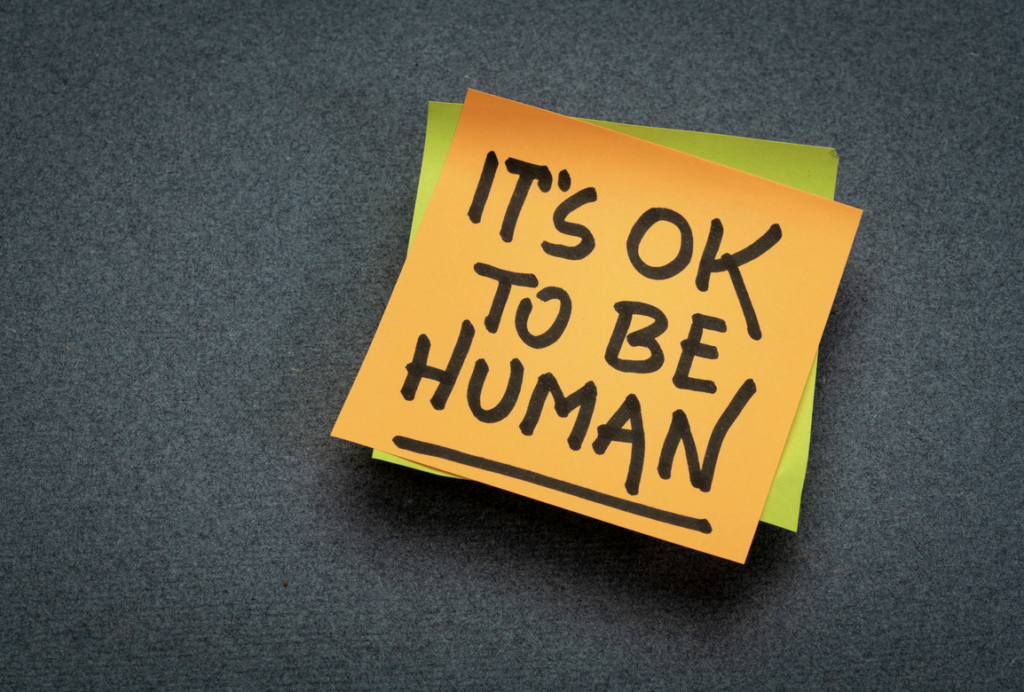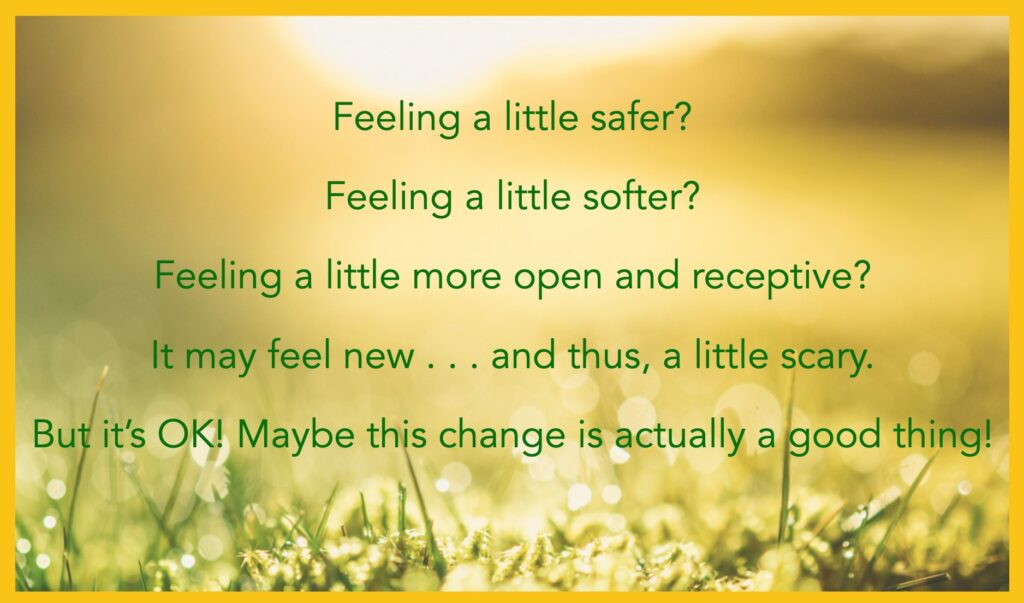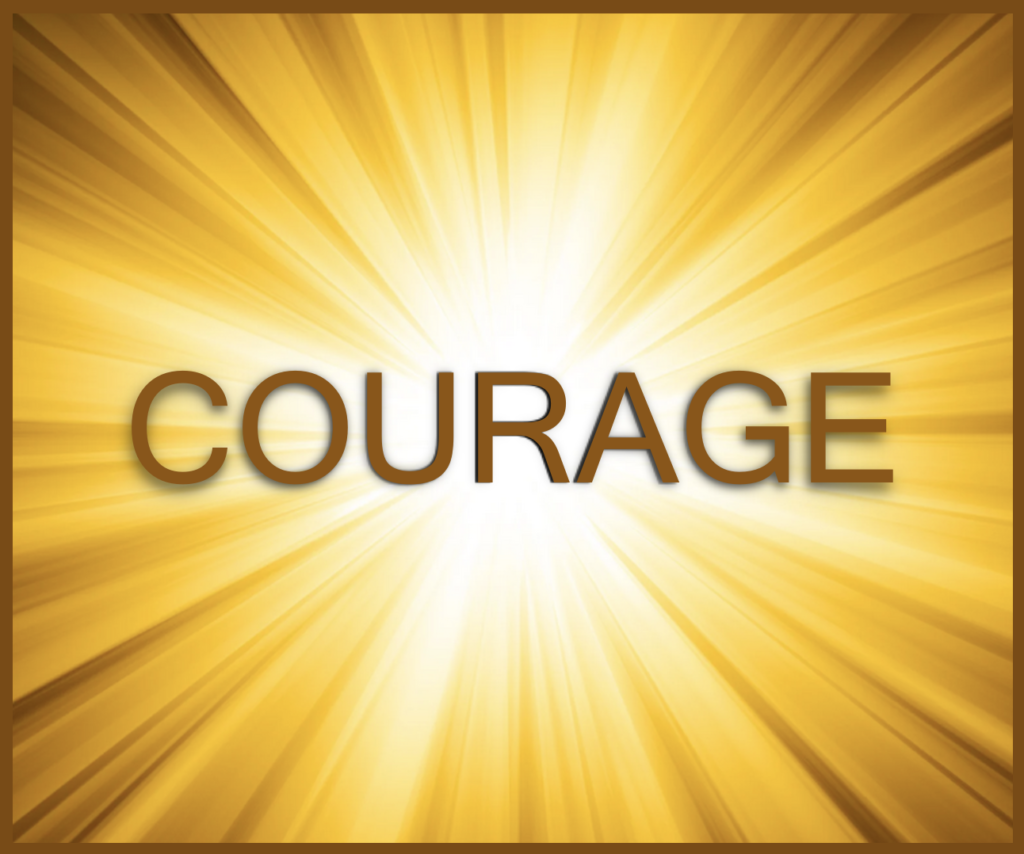Sometimes vulnerability (regardless of the source of that vulnerability) can manifest itself in your body’s physical reactions. Following are just some possibilities.
- You may feel your muscles tense, a knot in your stomach, or your stomach drop.
- You may feel a flip-flopping or “queasy” feeling in your stomach.
- You may feel your breath quicken or you may feel shaky on the inside.
- You may feel “raw” (or exposed) like you are walking around without your skin on.
- You may feel ungrounded and jumpy, or smaller than you actually are.
- You may just feel a general sense of unease and/or uncertainty.
When people openly share their thoughts, emotions, or needs, or even when one celebrates an achievement, one often feels vulnerable. One can also feel vulnerable, when one believes/perceives that they are being attacked in some way, or that they are about to be attacked in some way. One might feel physically vulnerable, when one is being exposed to “the elements” (e.g., a nearby out of control fire, excessive wind and rain, nearby flooding), etc.


But one can feel vulnerable, as well, when simply engaging in the SSP Protocol. And this is a very different kind of vulnerability. The filtered music – the filtered frequencies — transmit neuroceptive (unconscious) cues of safety to your nervous system, and you begin to soften, relax and open up (physically and emotionally). In response to that openness – that softness – that relaxation, you might experience a sense of vulnerability.
In this context, you may feel, softer, kinder toward others, more receptive, but also more exposed. You may feel more of an impulse to reach out and engage with others, more grateful for the connection with others, but also more exposed.
The SSP is effective in the exact way that Dr. Porges envisioned. But, when using the protocol with people with Physiological Shock Trauma and/or Adverse Childhood Experiences (e.g., neglect or abuse), this sense of vulnerability may lead to unintended/unexpected outcomes. One might respond to that sense of vulnerability with habitual defensive behaviors.
THAT is why it is SO important that one does not attempt to do the SSP protocol alone – without the guidance of a trained therapist who is skilled in titration. The nervous system has to be retrained, you might say, to be “ok” with vulnerability. One needs to learn that one can feel vulnerable, and nothing “bad is going to happen.” One needs to learn, on a nervous system level, that one can feel vulnerable and it can be life changing in a good way!
All to say, this kind of vulnerability, for many people, is scary. After all, it has the power to change your life. So, it is important to identify these feelings of vulnerability, while engaging in the SSP protocol so that your therapist can help you to track and integrate these feelings.

One CAN develop a sense of “ok-ness” with vulnerability.
Once CAN develop a sense of “ok-ness” while feeling connected to other people.
One CAN feel more at-ease in social situations.

It is not uncommon for people to avoid vulnerability at all costs. If that has been your experience to date, please keep in mind, that it IS possible to build a different relationship with vulnerability and doing so can be life-changing. Doing so can help you transform fear, and even terror, into a sense of belonging. And remember . . .
Vulnerability is NOT a sign of weakness.
it is a sign of courage!
It is a natural part of growing and expanding and it is at the root of the connectedness you long for.
